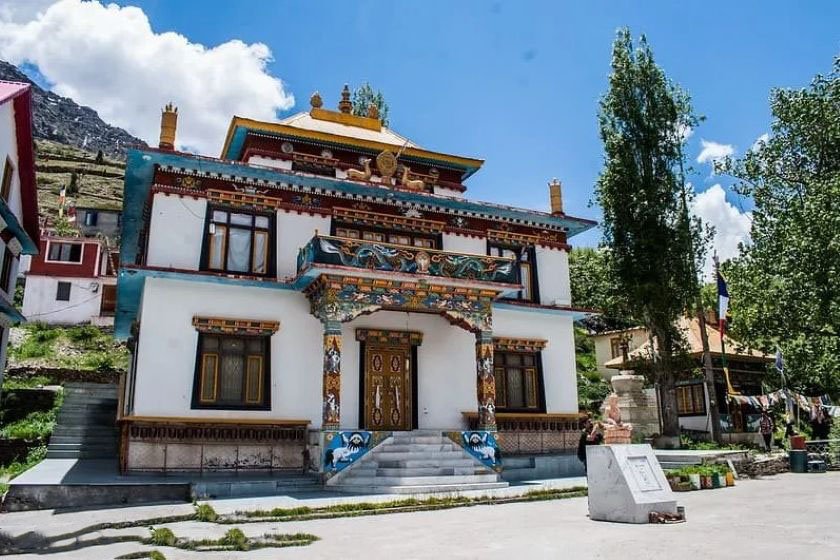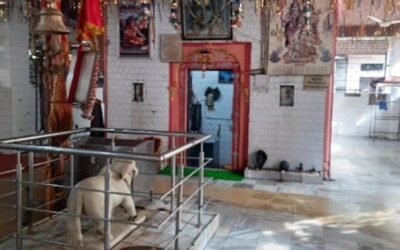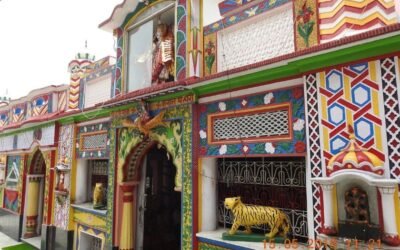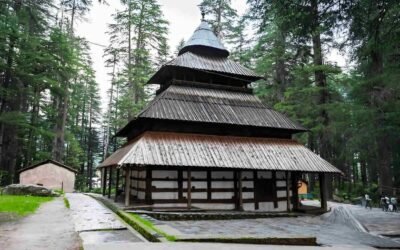Perched above the quiet hamlet of Gemur, just off the Manali–Leh highway, the Gemur Monastery (also known as Dge-smon Gsam-bstan Chos-gling) is a 17th-century Drukpa Kagyu gompa that radiates both spiritual gravity and artistic grace. With its fluttering prayer flags, ancient murals, and commanding views of the Bhaga Valley, this monastery is a lesser-known jewel in Lahaul’s sacred crown.
🌄 Location & Accessibility
- Location: Gemur Village, 18 km from Keylong, Lahaul & Spiti district, Himachal Pradesh
- Altitude: ~3,370 meters above sea level
- How to Reach:
- By Road: Manali → Atal Tunnel → Tandi → Gemur (open May–October)
- By Rail: Nearest station – Joginder Nagar or Pathankot
- By Air: Bhuntar Airport (Kullu) or Gaggal Airport (Kangra)
- Access: A short 700-meter uphill walk from Gemur village on NH-505
🛕 Historical & Spiritual Significance
Founded in the first half of the 17th century by Lama Tenzin Paldan with support from the Thakurs of Khangsar, Gemur Monastery became a central seat of Tibetan Buddhism in the sTod Valley of Lahaul. It was originally located higher up the mountain but was relocated to its current site in 1870 for accessibility and preservation.
The monastery belongs to the Drukpa Kagyu lineage, and its monks have historically served other gompas in the region, including those in Jispa, Dartse, and Khangsar.
🕉️ Deity & Worship
Gemur Monastery follows the Drukpa Kagyu lineage of Tibetan Buddhism and enshrines Goddess Marichi Vajravarahi, a fierce and protective deity associated with wisdom, light, and tantric power. Her sculpture is housed within the monastery’s inner sanctum, where she is venerated as a guardian of the Dharma and a remover of obstacles.
Daily worship includes chanting of mantras, offering of butter lamps, and ritual use of prayer wheels and musical instruments. Monks and visiting devotees seek her blessings for clarity, protection, and spiritual insight. During the annual Tshechu Festival, the monastery comes alive with Cham dances, where masked monks invoke deities like Vajravarahi through sacred movement and music, transforming the courtyard into a living mandala of devotion.
🏛️ Architectural & Artistic Highlights
- Built in Tibetan fortress style, with whitewashed walls, red-and-black window frames, and a massive chorten at the entrance
- Houses ancient thangkas, miniature paintings, and wall murals depicting Buddhist cosmology and tantric deities
- Features a sculpture of Goddess Marichi Vajravarahi, a fierce protector deity with roots in both Hindu and Buddhist traditions
- The prayer hall (Dukhang) contains ritual masks, musical instruments, and relics used during festivals
- A stone courtyard with carved inscriptions and a sacred tree adds to the monastery’s meditative aura
🎉 Tshechu Festival & Cham Dance
- Held annually in June or July, the Tshechu Festival is the monastery’s most vibrant celebration
- Features the Cham Dance, a masked ritual performance by monks to ward off evil and invoke blessings
- The dance includes brightly colored animal and bird masks, accompanied by drums, horns, and cymbals
- The festival draws villagers from across Lahaul and is a living expression of Himalayan Buddhist culture
🏞️ Nearby Attractions
- Jispa Village: A scenic riverside hamlet with homestays and trekking routes
- Tandi Sangam: Confluence of the Chandra and Bhaga rivers
- Kardang & Shashur Monasteries: Other major Drukpa gompas near Keylong
- Baralacha La & Suraj Tal: High-altitude pass and glacial lake on the Leh–Manali route
🙏 Spiritual Experience
The Gemur Monastery is not just a gompa—it’s a threshold between the visible and the mystical. As you ascend the winding path and hear the wind rustle through prayer flags, you’ll feel the presence of centuries of devotion etched into every stone and scroll. It’s a place where the silence speaks, and the mountains listen.




